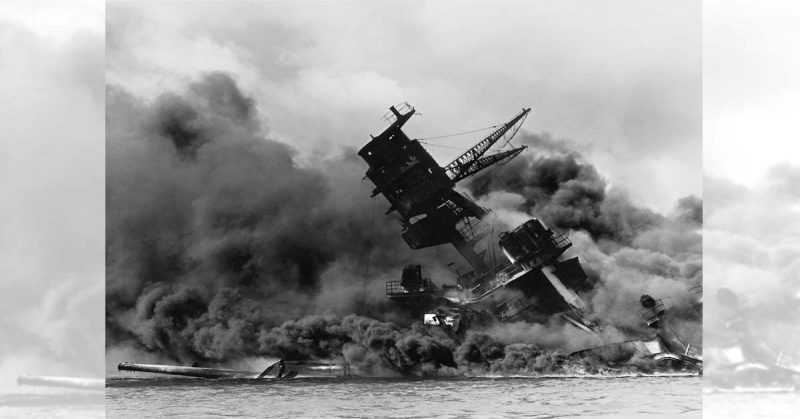Donald Stratton is one of the lucky ones out of the 334 sailors who survived the attack on the USS Arizona by Japanese aircraft on December 7, 1941, that took the lives of 1,177 men. His chilling account of survival 76 years later is a memorable testament to the will to live.
Even more impressive was his location – a covered observation post approximately 60 feet above the deck reached by scrambling up five ladders. Stratton was a sight setter who determined the range to attacking aircraft for the anti-aircraft guns.
There were so many planes, and so close, he could see the pilots waving and smiling, he related. Attempts were made to hit airplanes, but anti-aircraft shells couldn’t match the altitude of the planes, exploding before reaching the target.
Numerous bombs hit the Arizona until a 1,700-pound bomb struck one million pounds of ammunition and ignited 180,000 gallons of aviation fuel. Stratton was 500 feet away.
A series of other explosions followed as bombs blew away 110 feet of the ship, a gun turret housing the big guns flew into the air landing on the deck, Stratton said. An ammunition and gasoline-fueled fireball climbed 800 feet into the air. The conflagration hit Stratton and many others.
Seventy percent of his body was burned. His T-shirt caught on fire, scorching him. The hair on his head was burned away, and his legs were seriously injured, he added.
Stratton remembers to this day the name of the man who saved his life: Joe George. He was 70 feet away on the USS Vestal cutting the lines that attached the two ships. George saw six men above in the observation post. Disobeying orders, George threw the lead-weighted line to the sailors, who hand over hand, scurried down the line.
After the attack, he spent ten months in the hospital. Stratton’s weight was half of his normal 180 pounds; his legs refused to work so had to re-learn how to walk. Everything had disappeared, even his fingerprints.
Stratton dissuaded doctors from amputating his left arm because it wasn’t healing. Eventually, after much effort, he regained full use of the arm.
He received a medical discharge, went back home to Red Cloud, Nebraska, stayed there for a year and then re-enlisted. Stratton was at the Battle of Okinawa as a crewman on a destroyer that passed the Arizona on the way out of Pearl Harbor, The New York Post reported.
The Battle of Okiwana was 82 days of hell, as he describes it. In July of 1945, he was posted to the hydraulic-electric school at San Diego. A month later, atomic bombs dropped on two Japanese cities ending the war.
